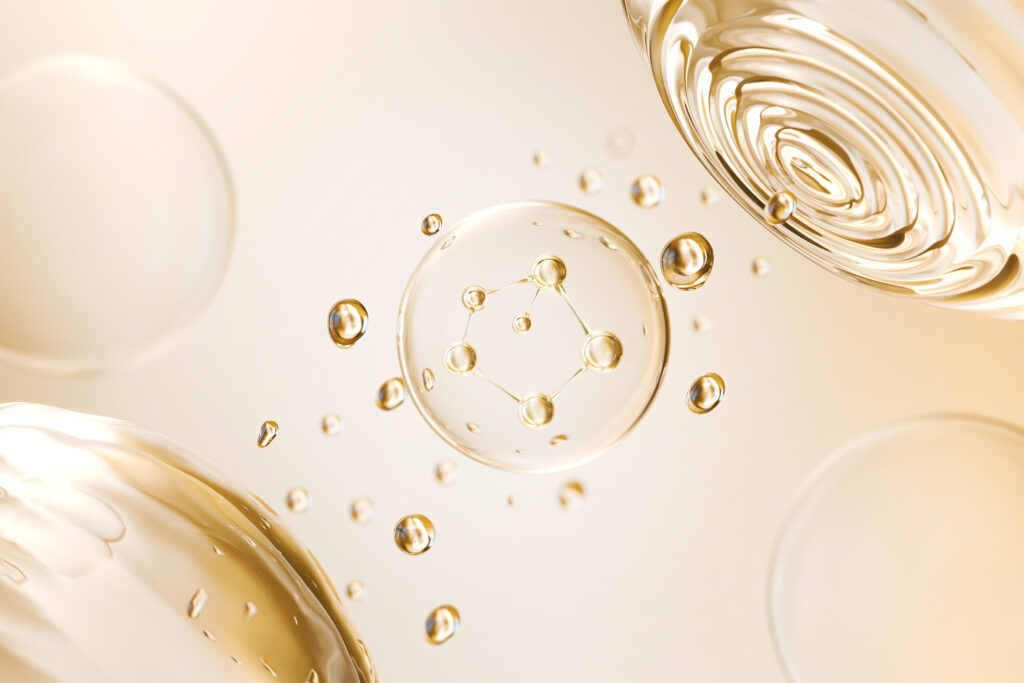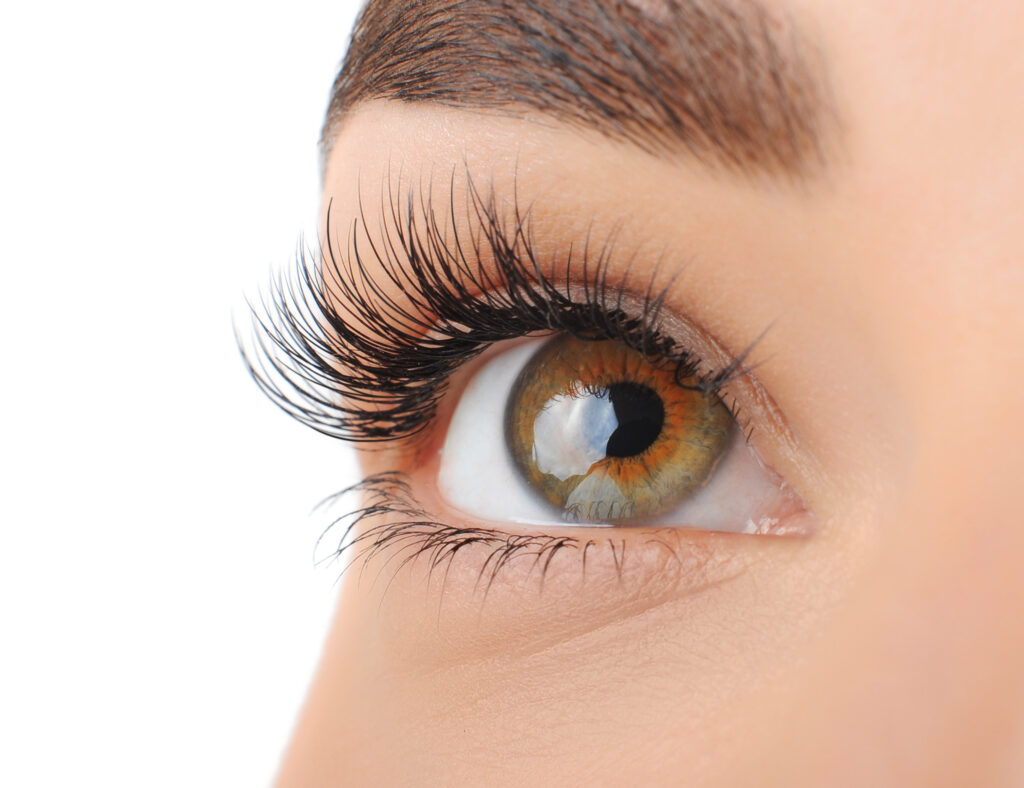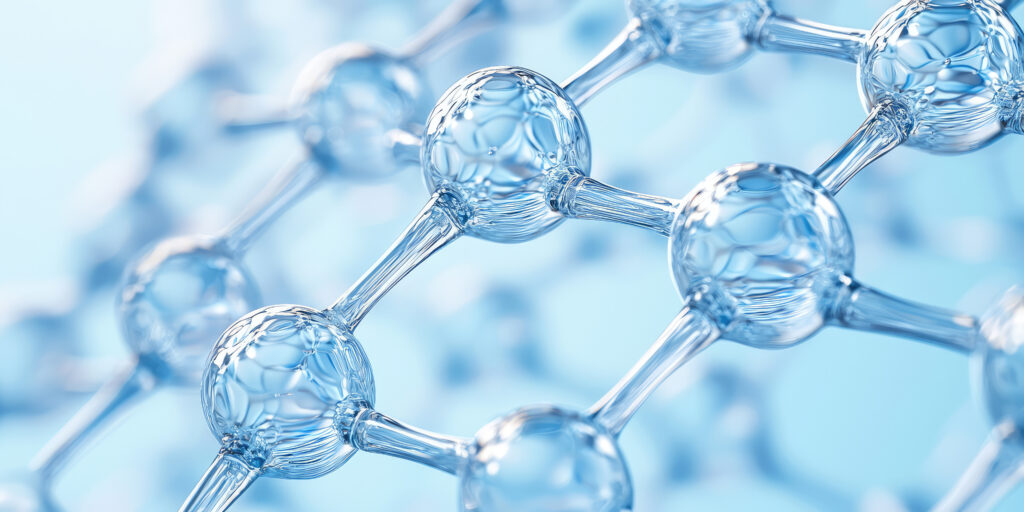Navigating the Complexities of City Skin Living
Today’s formulators aren’t just creating skincare; they’re developing biological defense systems. The reality of modern skin exposure isn’t limited to UV rays or seasonal dryness. Instead, it includes a persistent, invisible barrage of pollutants, including polycyclic aromatic hydrocarbons (PAHs), volatile organic compounds (VOCs), and airborne microbial stressors—all capable of disturbing the delicate balance of the skin barrier and microbiota.
This growing exposome challenge forces cosmetic chemists to rethink what a protective active should do. It’s not enough to claim antioxidant activity or moisturization; ingredients must now interact with skin microbiota, mitigate pollution-induced inflammation, and support visible improvements in skin tone and texture.
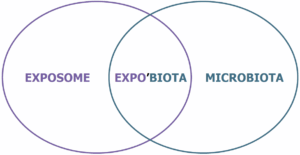
Seqens Personal Care answers this call with Cell’intact™, a multi-functional, microbiota-friendly ingredient derived from buckwheat. Described as an “Expo’Biota Active Ingredient,” it merges biotechnology and phytochemistry to meet the moment.
Pollution, Inflammation, and Microbiome Imbalance
The cosmetic industry has long recognized pollution as a contributor to premature aging, but only recently has the understanding of skin microbiome disruption deepened. Research has shown that chronic exposure to air pollutants such as PAHs can trigger a cascade of biological changes: oxidative stress, inflammatory cytokine production (e.g., IL-8), degradation of structural proteins like Claudin-1, and ultimately, impaired skin barrier integrity.
Moreover, urban environments introduce not just chemical threats but biological ones as well. A 2021 study in Scientific Reports highlighted how long-term pollution exposure alters the composition of the skin microbiota, enriching pathogenic strains while decreasing biodiversity—a phenomenon linked to eczema and barrier dysfunction¹, while another 2024 study in Environmental Research found that particulate matter pollution enriches opportunistic strains like Acinetobacter and Pseudomonas, further highlighting the need for active ingredients that help preserve microbial balance and barrier function³. These shifts correlate with increased protein oxidation and dull, uneven complexion—clinical concerns formulators are challenged to address.
Add to that the growing demand for clean, natural, and sustainable actives, and formulators are left balancing efficacy, safety, and ecological responsibility in one act. Traditional antioxidants or occlusives simply don’t go far enough.
How Cell’intact™ Shields and Strengthens Skin
Cell’intact™ offers a new approach: rather than fighting pollution with a single-mechanism shield, it enhances the skin’s own ecosystem to resist and recover. Derived from Polygonum Fagopyrum (buckwheat) via enzymatic extraction, this liquid active is rich in polyphenols like rutin and hyperin—known for their anti-inflammatory and antioxidative actions—alongside functional carbohydrates.
Unlike conventional actives that act solely on the skin surface, Cell’intact™ modulates the skin microbiota to increase populations of beneficial pollutant-degrading bacteria such as Paracoccus aminovorans and Kocuria sp. These bacteria are capable of breaking down harmful compounds like benzo[a]pyrene and toluene.
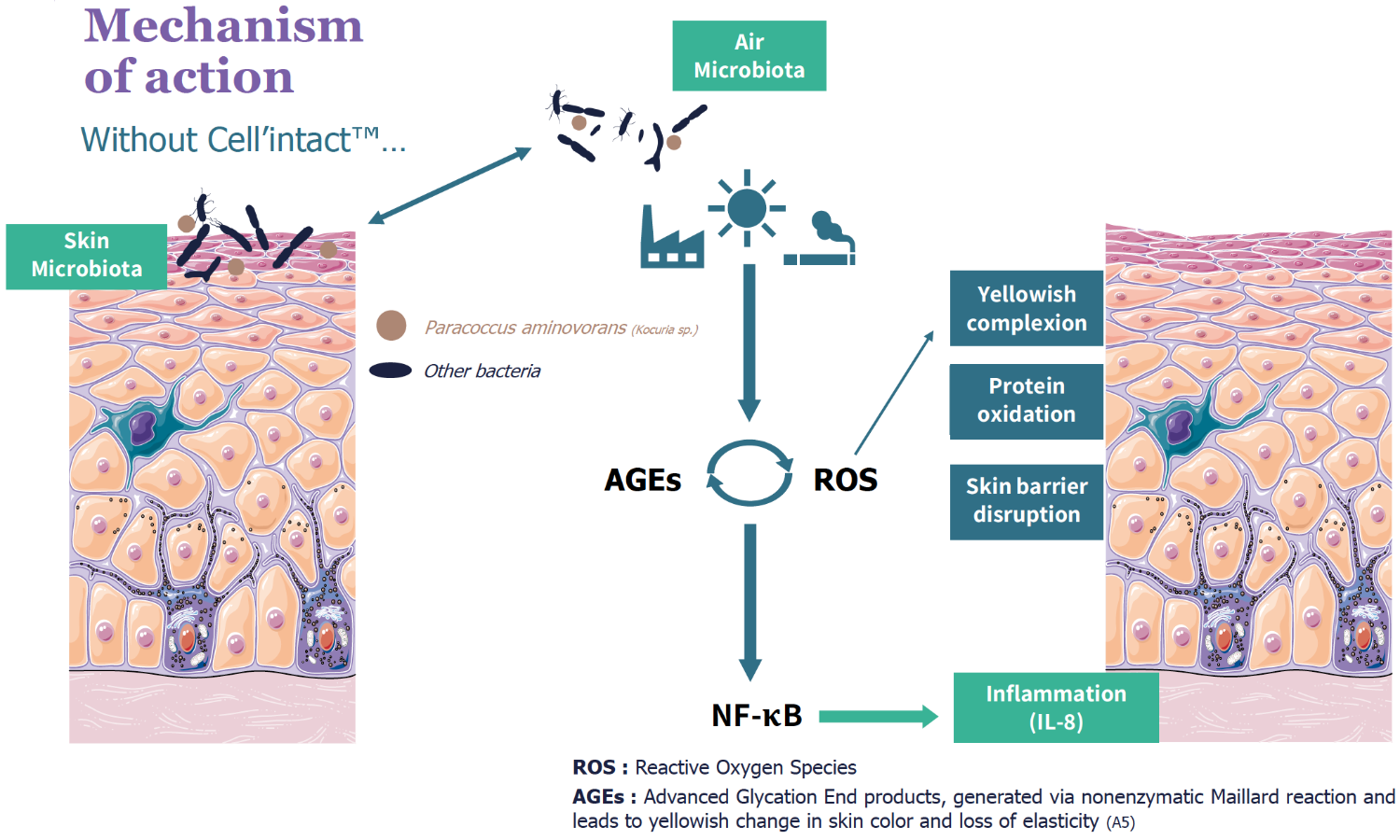

In essence, Cell’intact™ encourages the skin to “bio-remediate” itself, enhancing microbial defense while simultaneously mitigating damage. This aligns perfectly with the exposome-centric trend in skincare, where actives must work in harmony with the skin’s biology and environmental interactions.
Quantifying Efficacy: What the Data Really Shows
The performance of Cell’intact™ is supported by a multi-tiered evaluation: ex vivo assays, in vivo studies, and microbiota profiling.
► Anti-inflammatory Efficacy
In ex vivo tests, Cell’intact™ reduced IL-8 secretion by 26.2% and inhibited NF-κB activation by 11.2% when skin explants were challenged with benzo[a]pyrene and UV radiation. These reductions highlight the active’s potential in calming pollution-induced irritation without compromising skin homeostasis.
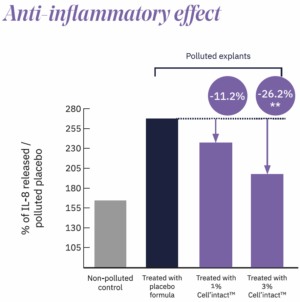
► Barrier Integrity
Cell’intact™ prevented degradation of Claudin-1 and Claudin-4 proteins in tight junctions—a critical factor in preserving epidermal cohesion. At both 1% and 3% inclusion, it restored barrier protein expression and tissue architecture in polluted explants.

► Clinical Performance
In a 28-day hemi-face study with 26 women living in high-pollution zones, a 3% Cell’intact™ cream demonstrated:
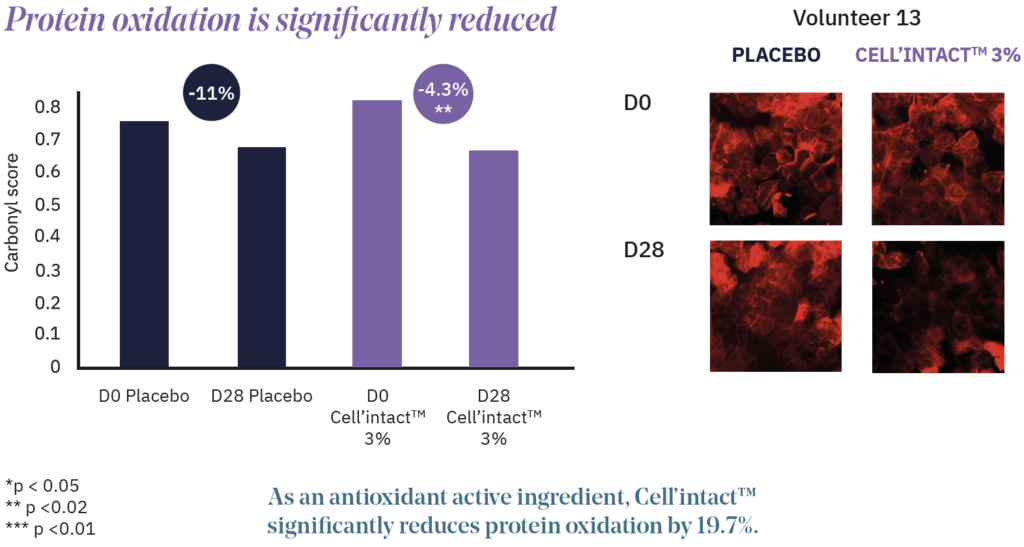
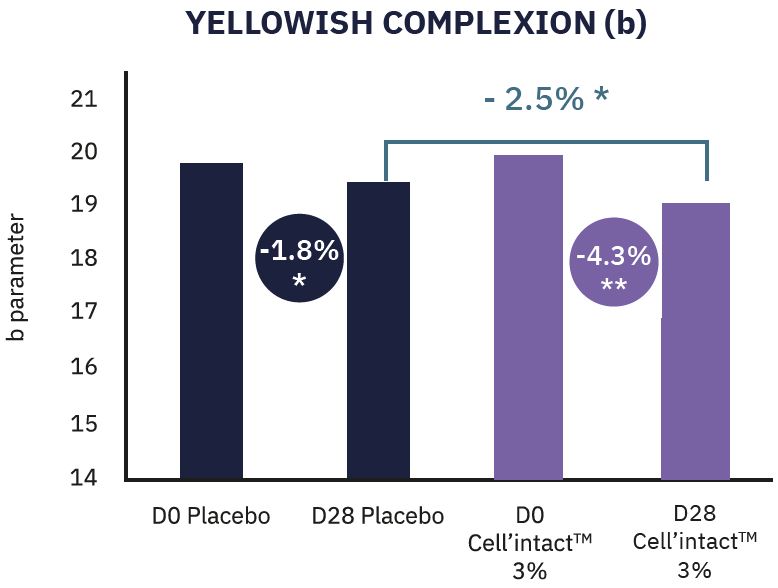
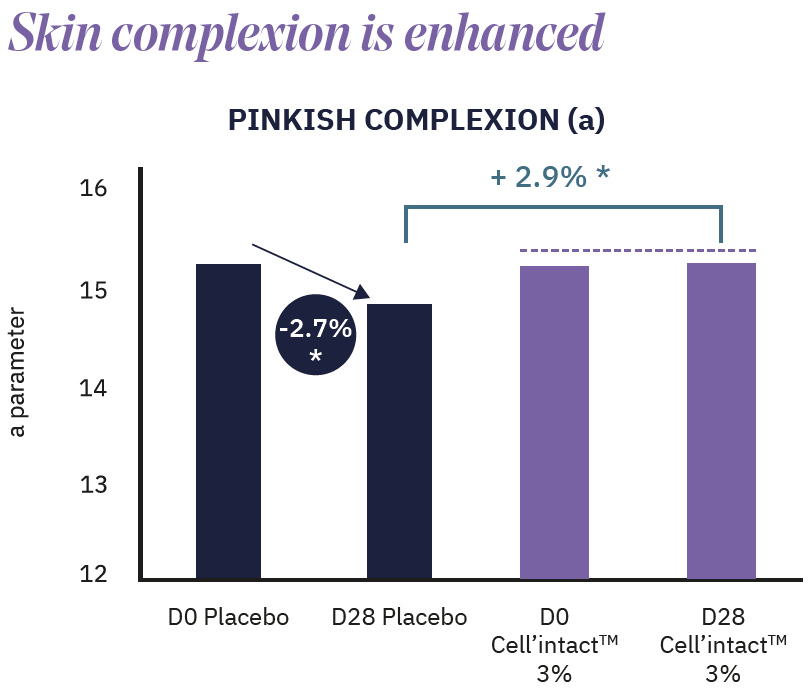
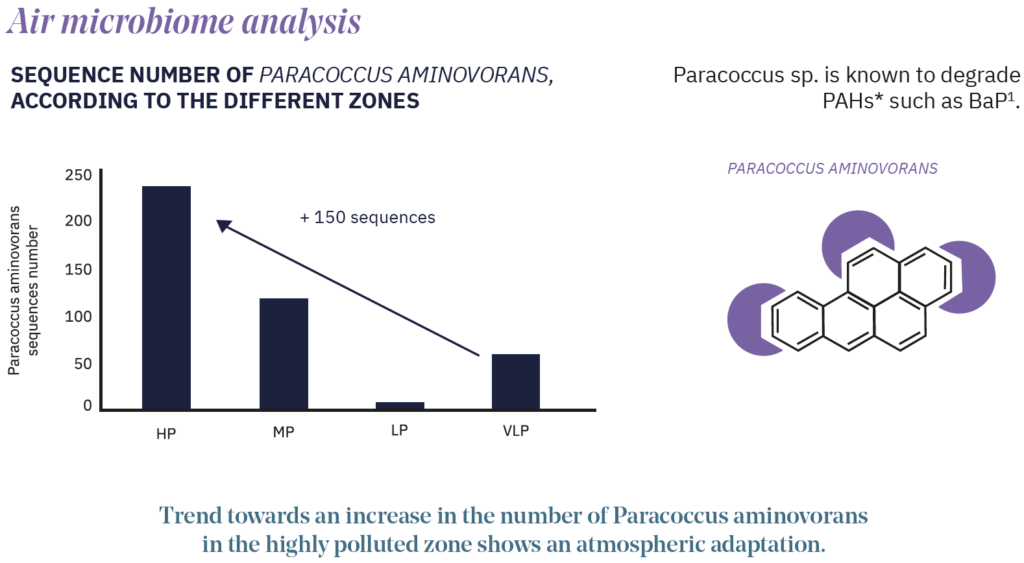
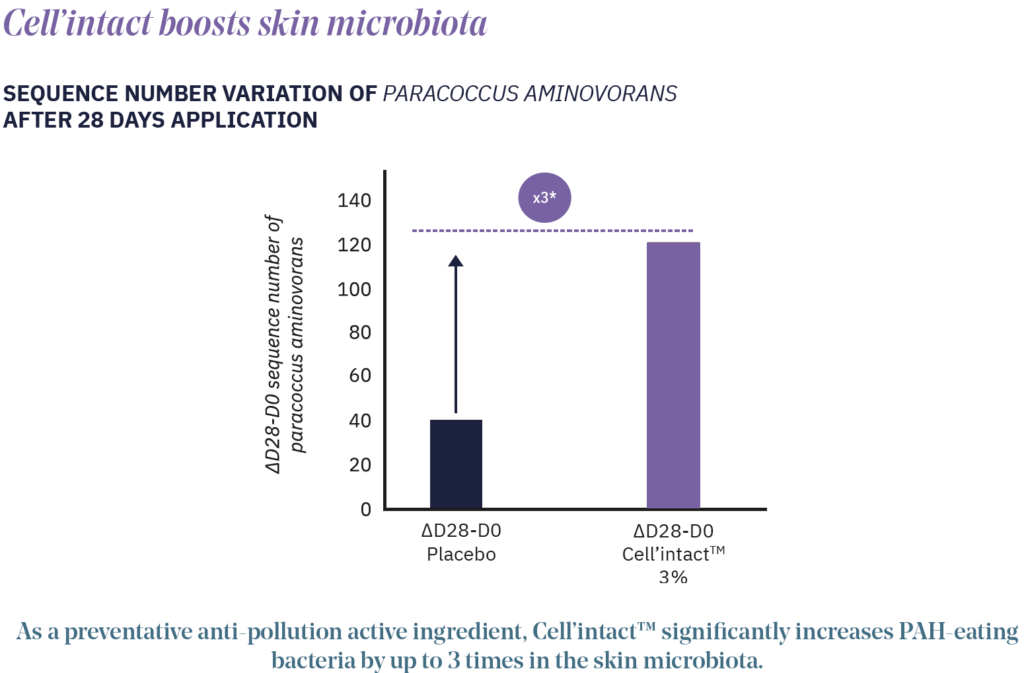
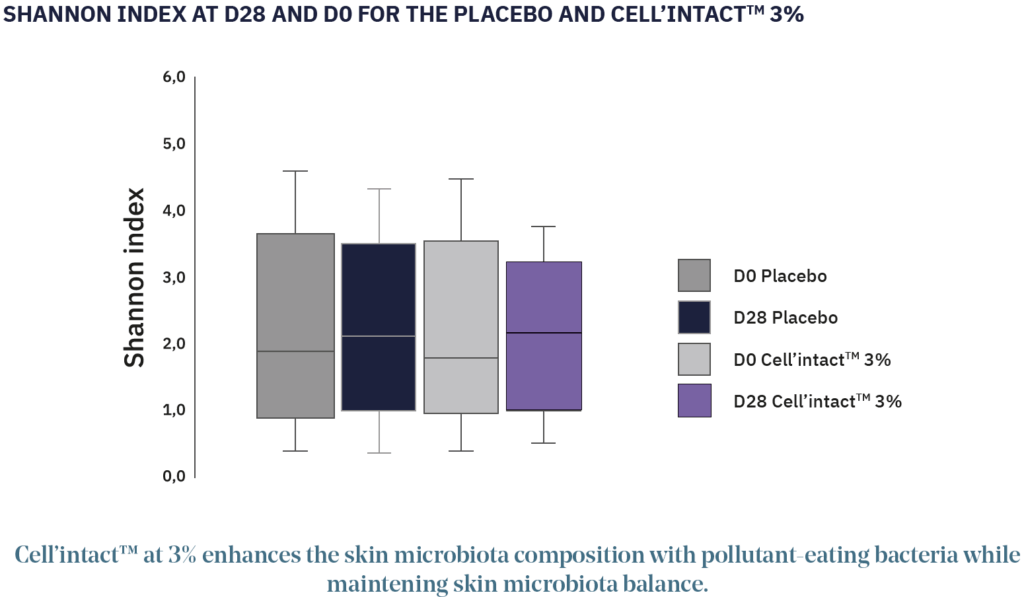
These results suggest both functional and aesthetic improvements—a rare dual achievement for an active ingredient. on the skin, while maintaining biodiversity (Shannon Index).
These results suggest both functional and aesthetic improvements—a rare dual achievement for an active ingredient.
Beyond Protection, Toward Resilience
Pollution isn’t a trend. It’s a chronic exposure that will only intensify with global urbanization. According to a 2024 PubMed study, the atmospheric microbiome is not just a passive element—it actively interacts with human skin, influencing barrier health and microbial composition². As such, the next generation of skincare must do more than create a protective coat; it must teach the skin to thrive in adversity.
Cell’intact™ embraces this shift by offering a complete exposome solution: antioxidant, anti-inflammatory, barrier-repairing, and microbiota-boosting. Moreover, it checks the boxes for sustainability and transparency. Sourced from PGI-certified buckwheat in Brittany and manufactured under fair-trade, traceable practices, Cell’intact™ aligns with growing consumer and regulatory scrutiny.
In the context of biotech-driven natural actives, it represents a meaningful step forward—one that redefines what “urban skincare” can mean for formulators and brands alike.
Next Steps for Formulating in an Exposome-Driven World
Formulators tasked with creating the next generation of skin resilience products need actives that deliver not just claims but measurable, multi-mechanism performance. Cell’intact™ from Seqens answers that need with scientific credibility, sustainable sourcing, and modern efficacy.
If you’re designing skincare for the urban consumer—sensitive skin, exposome fatigue, or complexion dullness—Cell’intact™ offers a single ingredient with wide-reaching benefits.
Explore how Cell’intact™ can elevate your formulation strategy. Contact Deveraux Specialties for a sample or technical dossier today.
References
- Wang, Y. et al. “Multi-omics analysis to decipher the molecular link between chronic exposure to pollution and human skin dysfunction.” Scientific Reports. 2021. https://www.nature.com/articles/s41598-021-97572-1
- Zhang, Z. et al. “The influence of air pollution on skin microbiome: a link to skin barrier dysfunction.” PubMed. 2024. https://pubmed.ncbi.nlm.nih.gov/39460761/
- Kim, H. et al. “Particulate matter pollution alters the bacterial community structure on the human skin with enriching the Acinetobacter and Pseudomonas.” Environmental Research. 2024. https://www.sciencedirect.com/science/article/pii/S0147651325003975
- Seqens Personal Care. Cell’intact™ Product Info & Technical Dossier. 2024.





